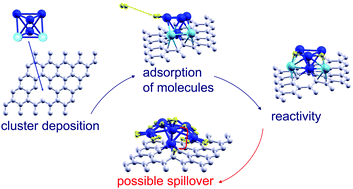Palladium clusters, free and supported on surfaces, and their applications in hydrogen storage
Abstract
Palladium is a late transition metal element in the 4d row of the periodic table. Palladium nanoparticles show efficient catalytic activity and selectivity in a number of chemical reactions. In this paper, we review the structural and electronic properties of palladium nanoclusters, both isolated and deposited on the surface of different substrates. Careful experiments and extensive calculations have been performed for small Pd clusters which provide ample information on their properties. Work on large Pd clusters is less abundant and more difficult to perform and interpret. Cluster deposition is a method to modify material surfaces for different applications, and we report the known results for the deposition of Pd clusters on the surfaces of a number of interesting substrates: carbonaceous substrates like graphene and some layered novel materials related to graphene, metal oxide substrates, silicon and silicon-related substrates and metallic alloy substrates. Emphasis is placed on revealing how the structural, electronic and magnetic properties change when the clusters are deposited on the substrate surfaces. Some examples of chemical reactions catalyzed by supported Pd clusters and nanoparticles are reported. An issue discussed in detail is the influence of Pd on the storage of hydrogen in porous materials. Experimental work shows that the amount of stored hydrogen increases when the absorbing material is doped with Pd atoms, clusters and nanoparticles, and a spillover mechanism from the metal particle to the substrate is usually accepted as the explanation. To shed light on this issue, a critical analysis based on density functional simulations of the mechanisms of hydrogen spillover in perfect and defective graphene doped with palladium clusters is presented.

- This article is part of the themed collections: 2022 PCCP HOT Articles and PCCP Perspectives


 Please wait while we load your content...
Please wait while we load your content...